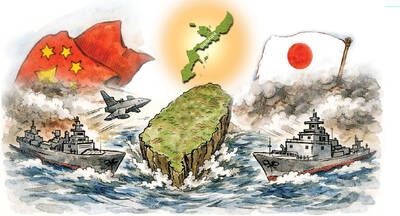Some travelers head for the wilderness in search of adventure. Some look for tranquillity. And some go hunting for the kinds of man vs. nature parables that Jon Krakauer (Into the Wild) and Werner Herzog (Grizzly Man) found: mysterious disappearances heightened by the drama of the landscape and its four-legged perils. When there's not much left of an outdoorsman other than his wristwatch, the details are gruesome, but the story has the
makings of a hit.
So the template for The Last Season is unmistakable. Eric Blehm, who was a serious High Sierra backpacker, not to mention the editor of a snowboarding magazine, has tried to shape the story of James Randall Morgensen along these familiar lines. Morgensen was a park ranger with a deep love of the outdoors. Then he suited up into his hiking gear, headed out into the backcountry of Sequoia and Kings Canyon National Parks and disappeared. What happened to him? More to the point, is there a book in it?

Regardless of the fair answer to that last question, Blehm has written a book. He begins by setting the scene. "A hermit thrush broke the alpine silence," he writes about the fateful morning of July 21, 1996, because Morgensen obliged his future biographer by recording the thrush's presence in his official logbook. Less officially, the once-rhapsodic Morgensen had been saying things like "I don't find much pleasure in the flowers anymore" and "after all these years of being a ranger, I wonder if it's been worth it." Then there were worrisome remarks in letters to friends: "Nothing seems predictable, except pain."
As The Last Season reveals, in steroid-enhanced versions of points that might shape a magazine article, there were obvious factors contributing to Morgensen's discouragement. He mourned the death of his father, Dana Morgensen, whose love of nature and job at Yosemite National Park had had a huge effect on his son. ("It was obvious that the cone hadn't fallen far from the pine tree.")
Dana's work had allowed his son to grow up in an extraordinarily inspiring setting. (The great nature photographer Ansel Adams was a family friend and an early mentor to Morgensen.) At 54, he had never had much luck with a writing career -- for reasons that this book, by quoting all too freely from his journals, makes clear.
"Whereas Randy's writing career had yet to bud, his relationship with Judi had flowered," writes Blehm, who shares Morgensen's fondness for nature metaphors. Many years earlier (the book tries to churn up interest by cross-cutting between Morgensen's youth and the story of his disappearance), he had fallen in love with Judi Douglas. Judi had been the "resident candlemaker" at a Yosemite art gallery when Morgensen met her and had been greatly smitten by him. "Randy could make a swarm of mosquitoes seem like the most romantic thing in the world," Judi once said.
Twenty years later, their marriage was on the rocks (an unfortunate phrase, under what proved to be the circumstances). So was Morgensen's affair with a fellow park ranger named Lo Lyness, who seems to have avoided Blehm's reportorial net when the author began "rattling the skeletons in Randy's proverbial closet" (another unfortunate image).
And while Morgensen grappled with personal problems, he had
professional ones too. Morgensen was sick and tired of what he called "Swinus Americanus," the species of backpacking tourist whose litter he had to pick up and whose foul temper could be the bane of his existence. One of the few interesting facts to be found here is that park rangers were, at least during the span of this story, the most assaulted federal officers in the nation.
So Morgensen quite literally walked away from it all. Did he realize the chain of events that this choice would trigger?
Morgensen's friends and colleagues found themselves engaged in a large-scale, grueling hunt for the missing ranger, an effort that would test their skills and challenge their fortitude. Blehm describes the search in painstaking day-by-day detail, right down to the paw injuries suffered by search dogs. It's clear where this is headed.
Initially, the search for Morgensen created more questions than it answered. Blehm explores those questions with plodding earnestness. He typically sets a scene by describing a Sierra drive with Alden Nash, a retired park ranger and former colleague of Morgensen's who also became Blehm's friend and mentor. "Nash took another long drink from the warm bottle of Gatorade he customarily kept in his truck to rehydrate at the end of a long hike with a heavy pack," Blehm writes. "Cruising along at a steady 88kph, he shook his head. `Why?'"
The Last Season promises to answer that question. And it does, technically speaking: In the matter of whether snow or ice proved more treacherous for Morgensen, Blehm winds up forming an opinion. Ditto to answering the question of why a search schnauzer initially failed to find Morgensen, and to why it took five years for his fate to be revealed. Incidentally, the time lag meant that there were two different memorial services for Randy Morgensen, one held while he was still missing. This largely uneventful, occasionally hubris-heavy book (one page juxtaposes a quote from Morgensen with one from Buddha) has more than enough time to describe both of them.
By the time Blehm invokes the supernatural and Robert Bly's Iron John as possible evidence of Morgensen's state of mind, it's clear that The Last Season is not one of those wilderness stories with far-reaching resonance. The author tries to make it matter. Instead, he just makes it sad.

Most heroes are remembered for the battles they fought. Taiwan’s Black Bat Squadron is remembered for flying into Chinese airspace 838 times between 1953 and 1967, and for the 148 men whose sacrifice bought the intelligence that kept Taiwan secure. Two-thirds of the squadron died carrying out missions most people wouldn’t learn about for another 40 years. The squadron lost 15 aircraft and 148 crew members over those 14 years, making it the deadliest unit in Taiwan’s military history by casualty rate. They flew at night, often at low altitudes, straight into some of the most heavily defended airspace in Asia.

Taiwan’s democracy is at risk. Be very alarmed. This is not a drill. The current constitutional crisis progressed slowly, then suddenly. Political tensions, partisan hostility and emotions are all running high right when cool heads and calm negotiation are most needed. Oxford defines brinkmanship as: “The art or practice of pursuing a dangerous policy to the limits of safety before stopping, especially in politics.” It says the term comes from a quote from a 1956 Cold War interview with then-American Secretary of State John Foster Dulles, when he said: ‘The ability to get to the verge without getting into the war is

Beijing’s ironic, abusive tantrums aimed at Japan since Japanese Prime Minister Sanae Takaichi publicly stated that a Taiwan contingency would be an existential crisis for Japan, have revealed for all the world to see that the People’s Republic of China (PRC) lusts after Okinawa. We all owe Takaichi a debt of thanks for getting the PRC to make that public. The PRC and its netizens, taking their cue from the Chinese Communist Party (CCP), are presenting Okinawa by mirroring the claims about Taiwan. Official PRC propaganda organs began to wax lyrical about Okinawa’s “unsettled status” beginning last month. A Global

Like much in the world today, theater has experienced major disruptions over the six years since COVID-19. The pandemic, the war in Ukraine and social media have created a new normal of geopolitical and information uncertainty, and the performing arts are not immune to these effects. “Ten years ago people wanted to come to the theater to engage with important issues, but now the Internet allows them to engage with those issues powerfully and immediately,” said Faith Tan, programming director of the Esplanade in Singapore, speaking last week in Japan. “One reaction to unpredictability has been a renewed emphasis on